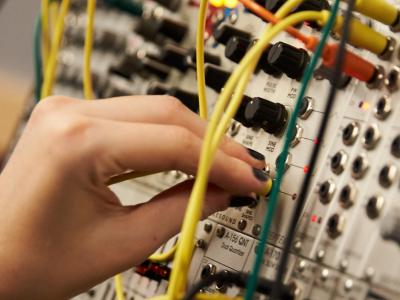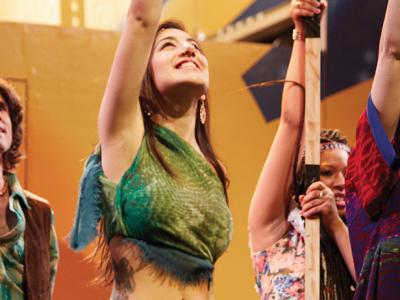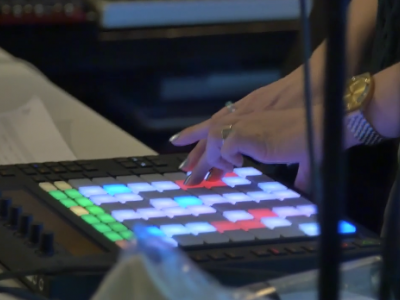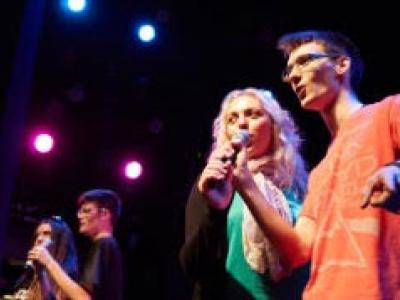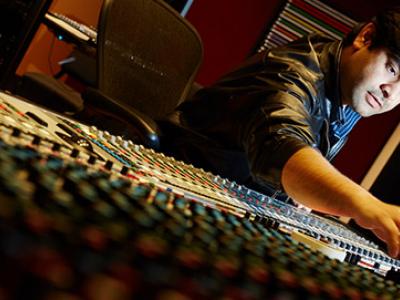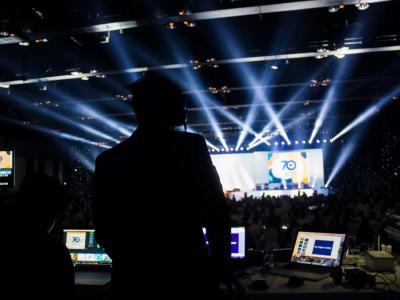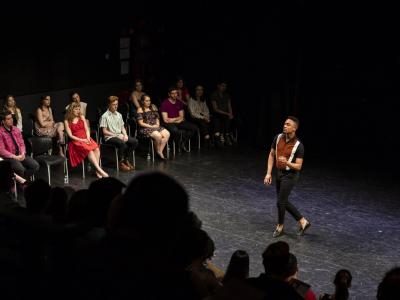What does a Lighting Designer do?
Whether creating an inviting mood with a single bulb, building a plot that expertly evokes a specific place or time of day, or directing the glow of hundreds of floods and spots to illuminate an outdoor stage, lighting designers marshal the transformative power of light to illuminate performers, focus an audience's eyes, support a narrative, and trigger emotions. The work varies greatly depending on the setting, and may revolve around something as concrete as a script or as ambiguous as an atmosphere or mood. Whatever the task, lighting designers rely on an artist's sensibility and an engineer's expertise to get the job done.
Lighting is the most ephemeral and abstract design element, and aspiring practitioners will need patience and an open, creative mind to master this unique form of communication.
For a staged production, lighting designers collaborate closely with other members of the design and production team, such as the director, stage manager, choreographer, set designer, and costume designer, as well as the the company or theater's technical director. To communicate their ideas to the rest of the team, designers often use visual aids such as renderings, storyboards, and photographs. Before drafting a light plot, they must take precise measurements of the space and assess the venue's power capacity, taking into account the location and position of fixtures, the truss, catwalk, stage, and other infrastructure. Designers then program the lighting for the show, inputting cues into the board for every color, effect, and movement and overseeing installation of the lighting rig by lighting technicians.
At a Glance
Lighting designers often follow a standard career path, starting as members of the lighting crew, stagehands, or general-purpose members of the road crew. Before becoming lighting designers, they might work specialized positions like spotlight operator, electrician, console operator, dimmer technician, and programmer. Eventually, they'll likely become lighting crew chiefs, or skip directly to designing their own shows. Successful lighting designers might go on to design for prestigious live events, or use their technical theater experience as the basis to work as technical director at a theater company or school.
Although some lighting directors work in-house for theaters and performing arts companies, most work as freelancers. Building a good reputation and maintaining a solid network are crucial to finding jobs, which often hinge on word-of-mouth referrals. Lighting designers who want to work at rock concerts should consider an entry-level job on a tour, at a venue, or at an event tech facility such as PRG or PSAV. Those wishing to work in theater or ballet should look for internships or technical apprenticeships on a show or in a theater.
- Designing light plots
- Rigging lights
-
Electricial engineering
-
Programming light boards
- Color theory
- Geometry
- Theatrical design
Lighting is the most ephemeral and abstract design element, and aspiring practitioners will need patience and an open, creative mind to master this unique form of communication. Although part of a lighting designer's work is individual and imaginative, it's also fundamentally a collaborative art. The abilities to be a team player and communicate one's ideas effectively are important, as are meticulous attention to detail and superb organizational skills.
A lighting designer's work cycle and hours vary considerably depending on the type of job. For a resident show, the lighting designer's work is finished on opening night. For a concert tour or touring ballet, musical, or opera, lighting designers may have to update the programming at each new venue, meaning they either travel with the tour as the leader of the lighting crew, or delegate that responsibility to a senior crew member and provide lighting plans and advice remotely. Lighting technicians work mostly in the afternoon and evening. Many freelance lighting designers have numerous shows going at once, so things can get very busy.

